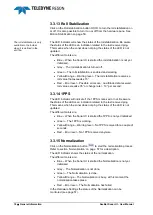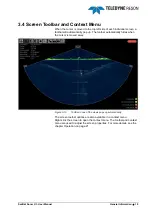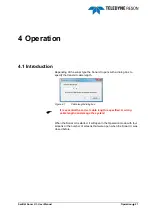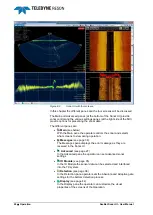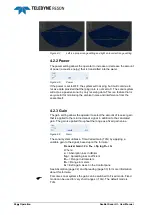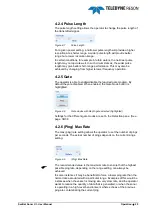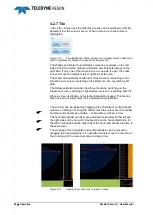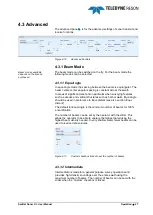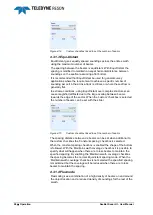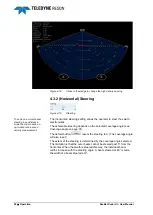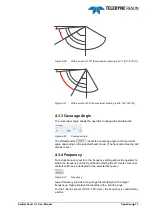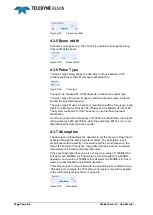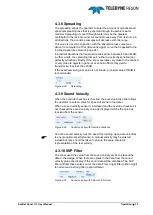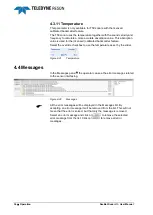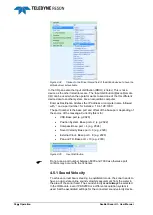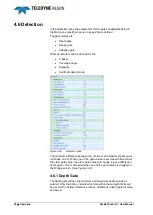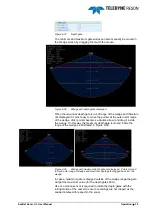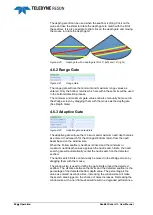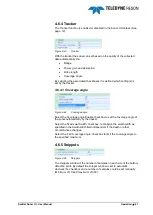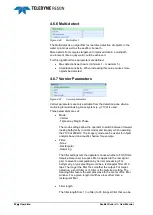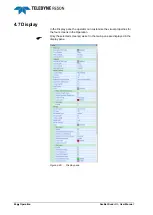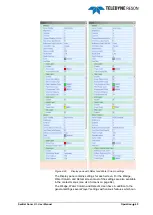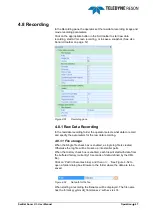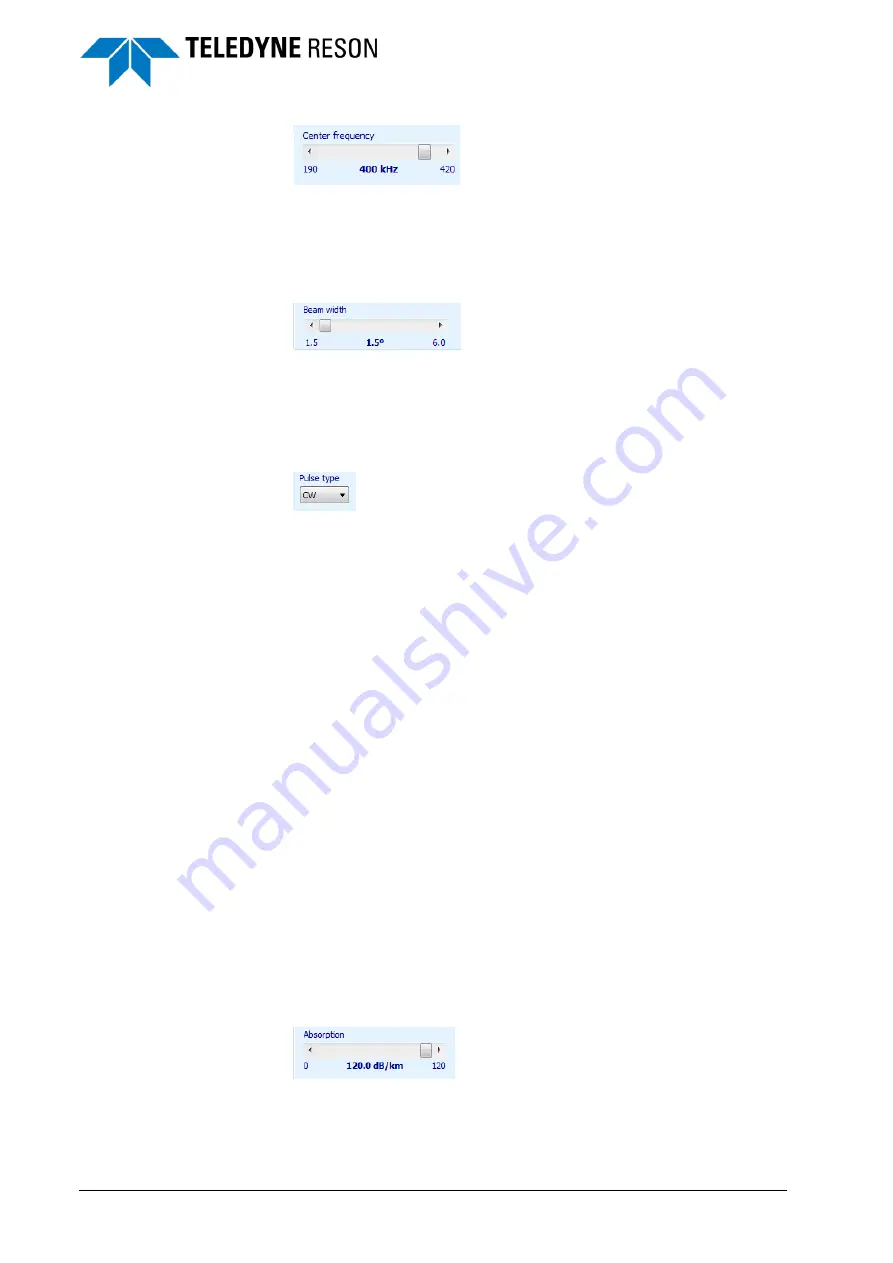
32
Operation
SeaBat Sonar UI - User Manual
Figure 4-24
Frequency slider
4.3.5 Beam width
For some sonar types (e.g. the 7160) it is possible to change the along
track width of the beam.
Figure 4-25
Beam Width
4.3.6 Pulse Type
The pulse type setting allows the operator to choose between CW
(Continuous Wave) and FM (Frequency Modulation).
Figure 4-26
Pulse type
The option to choose CW or FM depends on the sonar system type.
The pulse type CW uses a frequency with a continuous wave centered
around the selected frequency.
The pulse type FM uses a frequency modulation within a frequency range
that is for instance for 200kHz 185-215kHz and for 400kHz 381-411kHz.
The system will search for the frequency to use that have the least
disturbance.
An echo sounder with a frequency of 210kHz will disturb the sonar signal
with a pulse type CW at 200kHz, while the pulse type FM has no or very
little disturbance from the echo sounder.
4.3.7 Absorption
The absorption slider allows the operator to set the amount of loss that is
expected through the ambient water medium. The absorption loss is
proportional with the salinity of the water and the sound frequency: the
higher the salinity or frequency, the greater the loss. Also an increased
temperature will increase the absorption loss.
If the exact absorption loss value is not known, a value of 110dB/km for
salt water and 70dB/km for fresh water is recommended for a 400kHz
operation, and a value of 50dB/km for salt water and 20dB/km for fresh
water is recommended for a 200kHz operation.
This value is used in conjunction with the spreading loss coefficient (see
‘Spreading’) to compute the TVG (time varied gain) curve that is applied
to the returned signal (see Gain on page 24).
Figure 4-27
Absorption

